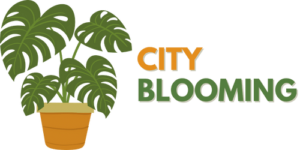5 Simple Techniques For City Blooming
5 Simple Techniques For City Blooming
Blog Article
The 2-Minute Rule for City Blooming
Table of ContentsThe Only Guide to City BloomingThe Facts About City Blooming RevealedNot known Factual Statements About City Blooming City Blooming for BeginnersThe 8-Second Trick For City Blooming
Interested in expanding food for sale in the City of Chicago? Below is a listing of regularly asked concerns regarding the policies and policies that growers ought to take into consideration when preparing a city agriculture task.
The zoning modification does not customize any type of various other codes handling composting, structure permits, purchasing or leasing City had residential or commercial property, company licenses or environmental contamination. There are existing codes that control these issues and they continue to be completely effect and may be applicable to your task. Community gardens are usually possessed or managed by public entities, civic organizations or community-based companies and maintained by volunteers.
Urban farms grow food that is intended to be sold, either on a not-for-profit or for-profit basis. Due to their industrial function, urban farms require a business permit.
The Best Guide To City Blooming
Composting is allowed yet just for plant material that is generated and utilized on site. The quantity of garden compost product can not surpass 25 cubic yards at any kind of offered time according to the standards in 7-28-715 of the City's Municipal Code. Yes. Since the dirt at many new yard websites needs amending, garden compost, soil, wood chips, or various other materials can be gotten to create or boost the growing room - urban gardening.

If a structure license is required after that the hoophouse will be taken into consideration an accessory structure. You can figure out more regarding the structure license needs by speaking to the Department of Structures. The 25,000-square-foot size limit is meant to avoid a single neighborhood garden from dominating an offered block or taking away from the block's existing domestic or business character.
The restriction does not put on gardens located in Public Open Space (POS) areas. Can there be greater than one community garden that is 25,000 square feet on a solitary block? Yes. The size limit relates to private yards, not to individual blocks. No. Fencing is not required, nevertheless, gardens that have huge parking lot might be called for to set up fence or various other landscaping features.
A Biased View of City Blooming
B1 & B2 areas call for you could look here that all business use tasks be carried out inside. R districts restrict industrial task. The guidelines show the function and intent of the Zoning Code. Is fencing required for metropolitan ranches? Yes. Fences might be required, along with landscaping and testing, for particular parking lot and exterior work or storage space areas relying on area and the details activity taking place.
Urban farms need structure permits and zoning authorizations prior to building (sustainable gardening). Various other kinds of city evaluation may be called for depending on certain structures, tasks, size, landscape design, licensing, public health and stormwater administration concerns.
Yes. The sort of permit is established by what is taking place at the website. The Division of Company Affairs and Customer Protection can help determine the particular kind of business license that's required. Yes. Off road auto parking is required for many commercial projects in Chicago. The needed number of parking areas is based upon the variety of employees dealing with website and not the square video of the growing space.
The City Blooming PDFs

Yes. An urban farm can offer garden compost material generated on site, nonetheless, the operation should abide by the guidelines in 7-28-715 of the Chicago Municipal Code. Yes. Aquaponic systems are enabled indoors on city ranches in many zoning districts. Nevertheless, a zoning evaluation and building permit is required in order to install frameworks or systems and a service certificate is required as explained above.
Up to five hives or nests of honey bees might be maintained as an accessory use. Nonetheless, beekeepers must register with the Illinois Division of Agriculture. To learn more concerning the proposed zoning modification you may get in touch with the Division of Real Estate and Economic Advancement, Bureau of Preparation and Zoning at 312.744.8563.
Farming in cities and urban locations A metropolitan ranch in Chicago. Urban agriculture refers to numerous techniques of growing. https://trello.com/u/cityblooming, handling, and distributing food in metropolitan locations. The term additionally applies to the area tasks of pet husbandry, tank farming, beekeeping, and cultivation in a metropolitan context. Urban farming is distinguished from peri-urban farming, which takes location in backwoods beside residential areas.
City Blooming Fundamentals Explained
, who look for to create social networks started on a common values of nature and neighborhood holism. These networks can develop by method of official institutional assistance, coming to be integrated into local community planning as a "change community" motion for sustainable metropolitan advancement.
The a lot more straight accessibility to fresh vegetable, fruit, and meat products that might be understood through city agriculture can improve food safety and security and food safety while lowering food miles, causing lower greenhouse gas emissions, thereby adding to climate modification reduction. A few of the initial evidence of city agriculture originates from Mesopotamia.
Report this page